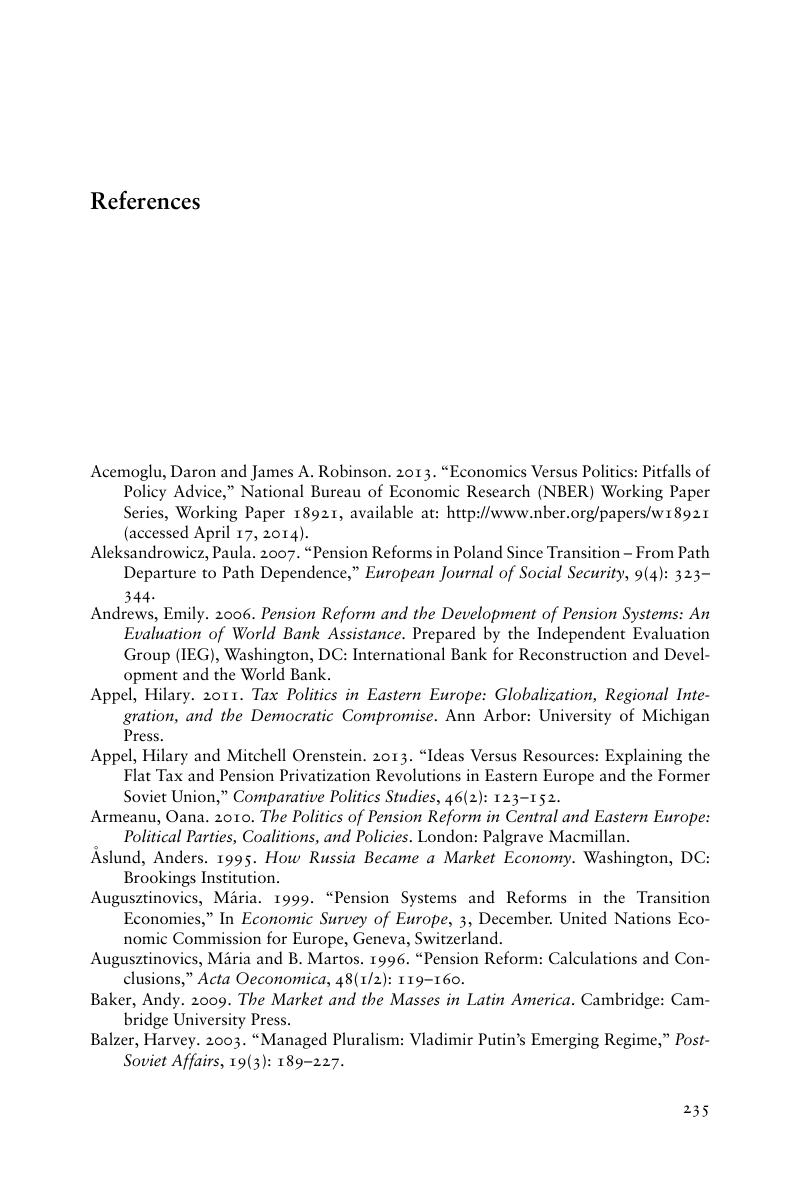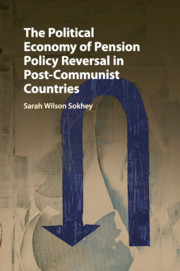Book contents
- The Political Economy of Pension Policy Reversal in Post-Communist Countries
- The Political Economy of Pension Policy Reversal in Post-Communist Countries
- Copyright page
- Dedication
- Epigraph
- Contents
- Figures and Tables
- Preface
- Note on Transliteration
- Part I Introduction and Theory
- Part II Global Trends in Pension Privatization Reversal
- Part III Pension Privatization Reversal Under Moderate Reform
- Part IV Conclusion
- Appendix of Interviews Conducted by Author
- Pension Terminology
- References
- Index
- References
References
Published online by Cambridge University Press: 20 October 2017
- The Political Economy of Pension Policy Reversal in Post-Communist Countries
- The Political Economy of Pension Policy Reversal in Post-Communist Countries
- Copyright page
- Dedication
- Epigraph
- Contents
- Figures and Tables
- Preface
- Note on Transliteration
- Part I Introduction and Theory
- Part II Global Trends in Pension Privatization Reversal
- Part III Pension Privatization Reversal Under Moderate Reform
- Part IV Conclusion
- Appendix of Interviews Conducted by Author
- Pension Terminology
- References
- Index
- References
Summary

- Type
- Chapter
- Information
- Publisher: Cambridge University PressPrint publication year: 2017

